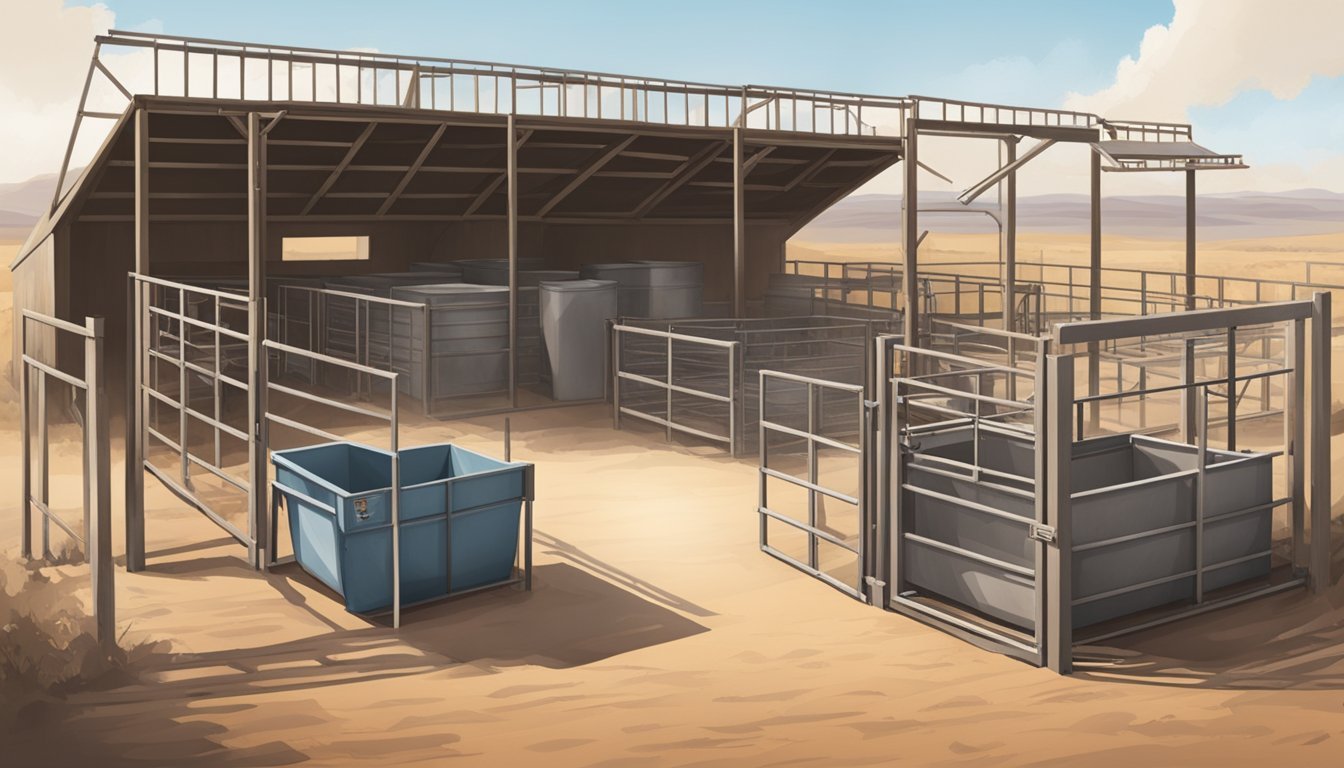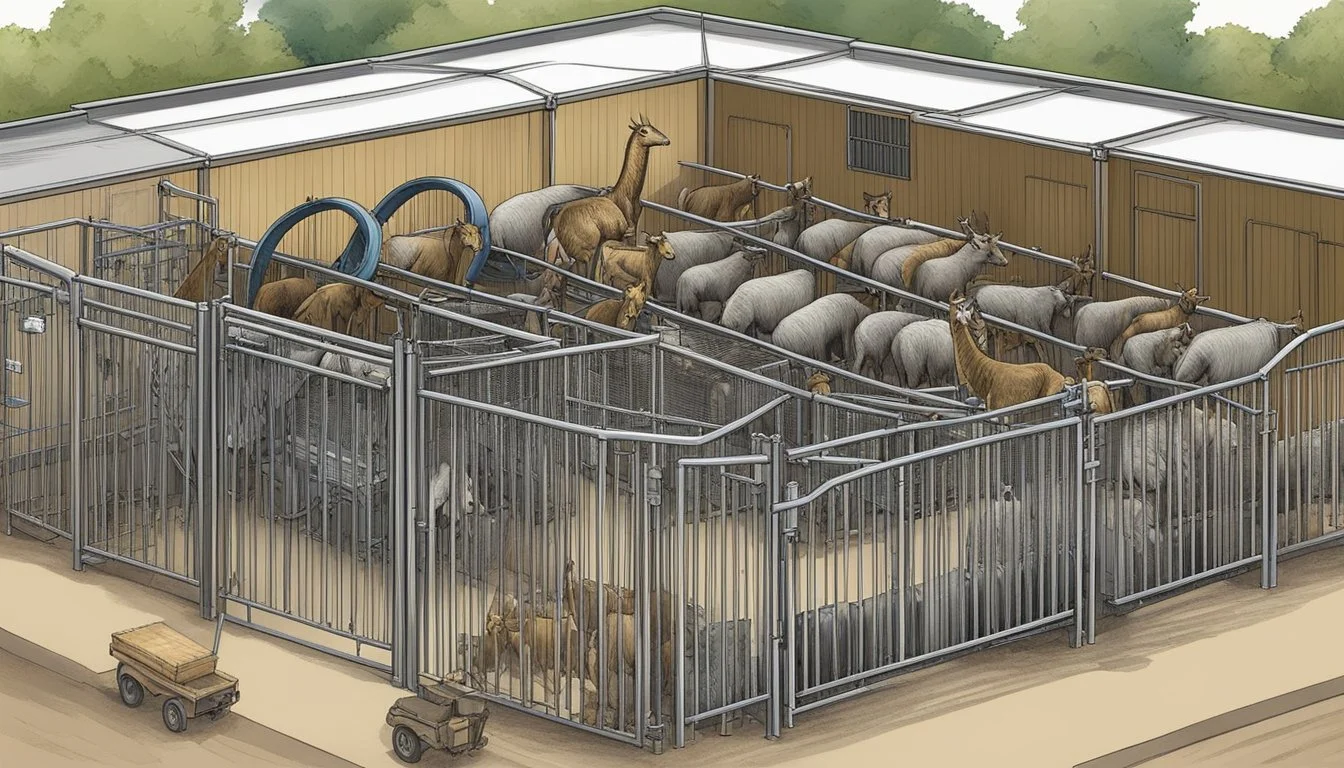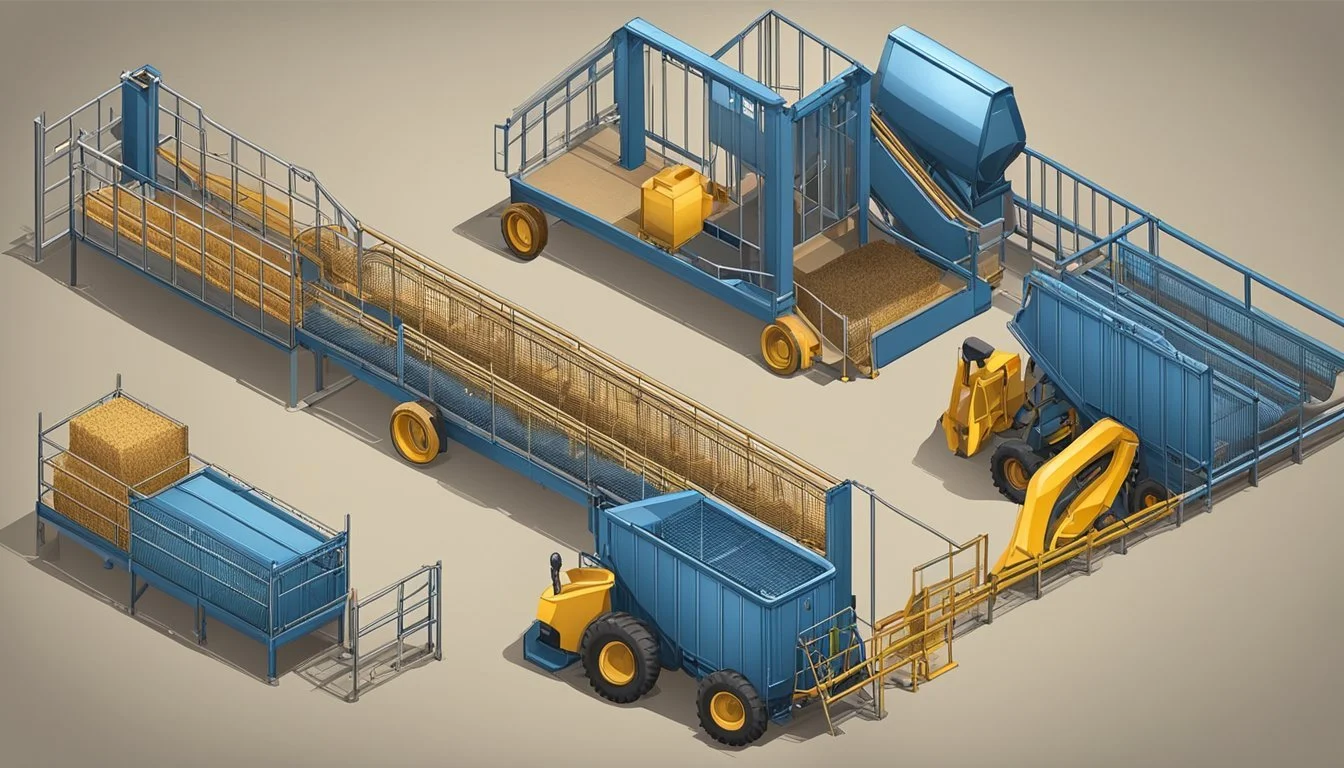Livestock Handling Equipment
Essential Tools for Efficient Farming
Livestock handling equipment plays a crucial role in modern agriculture and significantly impacts the efficiency and safety involved in managing animals on a farm. It is an essential aspect when dealing with diverse species of livestock, ranging from cattle to pigs, sheep, and goats.
Utilizing effective cattle movement solutions such as cattle loading chutes and innovative equipment designs can lead to faster, safer, and more efficient cattle handling, reducing the risk of cattle injuries and ensuring the well-being of both the animals and the cattle ranchers. These advancements facilitate the upright and smoother movement of cattle from tub to chute, head of cattle, and additional cattle, contributing to a healthier workforce and safer cattle management practices.
The different types of equipment available include fencing, gates, feeders, water troughs, weighing scales, and loading ramps, among others. These tools cater to exclusive needs and enhance productivity by streamlining processes and saving time and resources for farming businesses. Therefore, selecting suitable and high-quality livestock handling equipment can result in substantial benefits for both the animals and the handlers.
Investing in advanced livestock handling equipment is crucial for the sustainability of agricultural businesses, especially for cattle producers and cattle operations. By incorporating modern equipment such as cattle tubs, manual cattle chutes, portable cattle chutes, and innovative equipment design, cattle producers can significantly reduce labor costs and address challenges in animal husbandry.
These advancements not only improve efficiency but also help maintain a competitive edge in the cattle market. This article aims to provide insightful information on the wide variety of livestock handling equipment available, including loading chutes, alley systems, and chute-to-trailer solutions and offers guidance on choosing the most efficient and reliable products for cattle operations.
Fundamentals of Livestock Handling Equipment
Livestock handling equipment plays a crucial role in modern agriculture and significantly impacts the efficiency and safety involved in managing animals on a farm. It is an essential aspect when dealing with diverse species of livestock, ranging from cattle to pigs, sheep, and goats.
Utilizing effective cattle movement solutions such as cattle loading chutes and innovative equipment designs can lead to faster, safer, and more efficient cattle handling, reducing the risk of cattle injuries and ensuring the well-being of both the animals and the cattle ranchers. These advancements facilitate the upright and smoother movement of cattle from tub to chute, head of cattle, and additional cattle, contributing to a healthier workforce and safer cattle management practices.
History and Evolution
In the early days of animal husbandry, livestock were mostly managed through manual labor and simple tools. However, as the field of animal science advanced and the demand for high-quality protein sources increased, so did the need for more efficient and safe livestock handling methods. Consequently, the development and evolution of livestock handling equipment took off and today, it plays a vital role in modern-day animal farming.
Over the years, various types of equipment have been introduced to facilitate safe and efficient handling of livestock. Starting from basic restraining devices, like ropes and halters, the industry saw the introduction of more advanced equipment like head gates, squeeze chutes, and conveyor systems. These innovations were driven by the understanding that safe and efficient livestock handling not only improves animal welfare but also increases productivity and profitability for farmers.
Key Principles of Safe and Efficient Livestock Handling
When it comes to ensuring safe and efficient livestock handling, several key principles should be observed. Below are some of the most important ones:
Animal behavior and psychology: Understanding and respecting the natural behavior and instincts of livestock can significantly improve handling experiences. For instance, using their natural inclination to follow one another can be used to design more efficient movement systems.
Low-stress handling: Using calm and gentle techniques to direct livestock reduces stress, which in turn improves their overall health and reduces the risk of injuries or accidents. Techniques may include slow and deliberate movements and the use of visual barriers and auditory stimuli.
Proper facility design: Aligning the layout and design of livestock handling facilities with the animal's instincts and behavior can make the entire process much more efficient. A well-designed facility enables smooth animal flow and ease of movement, ultimately reducing stress and labor requirements.
Appropriate equipment selection: Choosing the right equipment for specific tasks is essential for both efficiency and safety, whether it's latches for cattle or other essential components. Selecting quality livestock handling equipment ensures maximum functionality, durability, and performance in your operation.
Employee training and best practices: Ensuring that all individuals handling livestock are adequately trained in safe and efficient handling techniques not only reduces the risk of accidents or injuries but also improves overall farm productivity.
Types and Uses of Handling Equipment
Livestock handling equipment plays a crucial role in the cattle industry, ensuring the safety and efficiency of both the animals and the workers. This section covers some common types of handling equipment and their uses, including adjustable cattle alleys, adjustable cattle loading ramps, advanced cattle chute solutions, bow cattle gates, and the All-In-One Cattle Corral System, which offers an array of cattle crowding features. These innovative solutions are integral to working systems and accessories, focusing on gates and panels, squeeze chutes, and cattle handling systems, further enhancing the overall efficiency and safety of livestock management at a Cattle Company.
Gates and Panels
Gates and panels are essential components of cattle handling equipment. They ensure the easy movement of livestock and help control the flow of animals through a ranch or farm.
Gates: There are various types of gates available, such as self-catch headgates, which automatically catch and hold the animal's head in place. These gates make handling cattle less stressful for both the animals and the ranchers. Durable gates, made by reputable manufacturers like Powder River, ensure a lasting investment in cattle handling.
Panel: Panels help to create pens, alleys, and holding areas. They are available in different materials, such as metal or wood, providing the ideal flexibility to design a customized working area according to the needs of each ranch or farm.
Squeeze Chutes and Cattle Handling Systems
Squeeze chutes and cattle handling systems provide a safe and efficient means of managing bulls and cows during various tasks like examinations, vaccinations, or tagging.
Squeeze Chutes: Chutes are designed to hold the animal safely and securely while enabling easy access for the rancher. A squeeze chute involves a self-catch headgate and a side-squeeze mechanism that gently holds the animal in place. These chutes are designed to be user-friendly and comfortable for the animals, reducing stress and the potential for injury.
Cattle Handling Systems: These systems typically combine various pieces of equipment, such as gates, panels, and squeeze chutes to provide an efficient, safe working environment. Many dealers across the USA offer customizable cattle handling systems. A well-designed system ensures a smooth and stress-free experience for both the livestock and the ranchers.
Working Systems and Accessories
Working systems and accessories enhance the functionality and efficiency of the livestock handling process.
Working System: A working system is a comprehensive set-up designed to facilitate all aspects of livestock handling, including sorting, processing, loading, and unloading. It may incorporate alleyways, pens, and adjustable alley components, making it easier to manage various types and sizes of livestock.
Accessories: Adding accessories like palpation cages, tailgates, and sorting gates can greatly improve the efficiency and safety of cattle handling. These accessories help ranchers perform specific tasks with ease while maintaining control over the animals.
As the cattle industry continues to evolve, ranchers must adopt modern livestock systems and equipment that prioritize safety and efficiency. By selecting durable and well-designed products, ranchers ensure a lasting investment in the well-being of their animals and their businesses.




